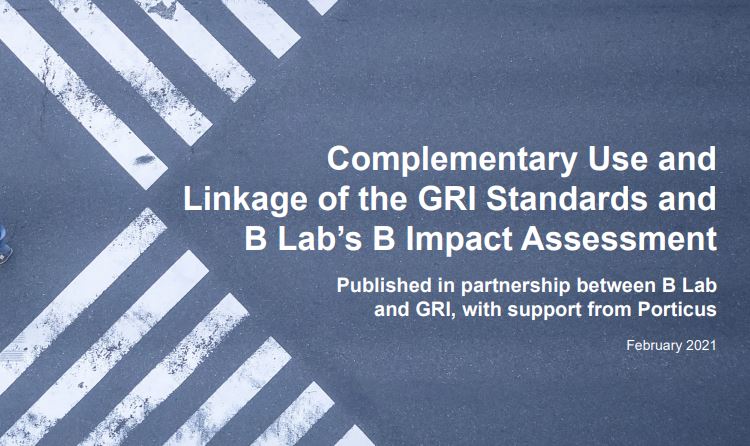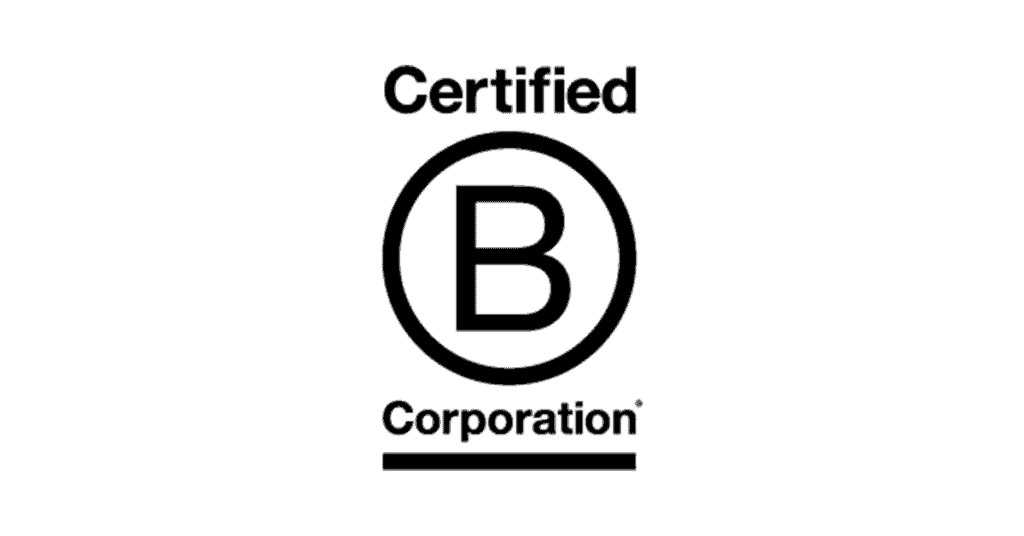2021 saw major global conversations surrounding sustainability – from race and gender inequity, the 6th IPCC report, net-zero commitments, COP26, deforestation, phasing out coal to resilient supply chains.
Some of these conversations started picking up steam way back at the beginning of the pandemic.
But over the past year, we’ve been seeing the powerful influence they’re having on the trajectory of the private sector.
For example, an estimated $120 billion was poured into ESG-focused investments in 2021. This is more than double the amount invested in 2020, which was itself a record-breaking year.
An article published in the Harvard Business Review claimed that sustainable business even “went mainstream in 2021”.
If sustainability in business made such great leaps in 2021, what will 2022 bring? Below, I offer my predictions on what we can expect to see.
1) DEI Initiatives Aimed at Systems-Level Change
Since the Black Lives Matter movement swept the world in May 2020, organizations have been paying increasingly more attention to diversity, equity and inclusion.
Apologies, anti-bias training, and diversity, equity and inclusion (DEI) committees characterized the response in 2020. But advocates for racial equity demand actions that lead to systemic changes in how the organization functions, operates and expresses itself.
And while we are nowhere near where we need to be, we did see better examples of meaningful action in 2021.

One such example comes from the American outdoor company REI.
In October, they launched Path Ahead Ventures (among other initiatives), which will invest $30 million in outdoor brands founded by Black, Indigenous, Latinx and Asian American Pacific Islander entrepreneurs.
By supporting these businesses to launch and/ or scale, REI will help shift the make-up of their suppliers and the under-representation of BIPOC outdoor business owners.
Businesses large and small will make progress on actions leading to systems-level change in 2022. We must demand nothing less.
Such a large investment in businesses owned by people of colour has the potential to influence systems-level change in important ways:
- It helps address imbalances in wealth and opportunity caused by centuries of ongoing systemic racism
- It will create opportunities for “their innovations, perspectives and ideas to influence the broader industry”, says Susan Viscon, REI senior VP
- It will increase the presence of BIPOC-owned outdoor businesses, which will help shift mindsets about who outdoor recreation is for, which then influences behavior changes. Indeed, this is why representation matters.
In 2022, businesses large and small will make progress on actions leading to systems-level change. Indeed, we must demand nothing less.
For help with making meaningful progress on DEI in your organization, check out Canadian Equality Consulting and Tidal Equality.
2) Employee Well-being & Belonging Prioritized
Employment challenges posed by the pandemic – remote work, (un)paid sick time, lay-offs, burn-out, anxiety and increased caregiving responsibilities – have shone a major spotlight on the health, safety and rights of workers. Black, Indigenous, and people of colour disproportionately struggle with these challenges, not unrelated to the systemic racism that pervades workplaces and broader society, and the need for progress on racial equity.
Employers’ response to these challenges have therefore been under scrutiny. And while some have simply failed to rise to the occasion, others have provided best-case examples of what it looks like to be a supportive, human-centered employer.
But there weren’t enough of these examples to offset the great number of employees who are simply fed up. The record number of employees quitting their jobs is now being called ‘The Great Resignation’, and there are no signs that we’re past it.
A global survey conducted in September 2021 by McKinsey shows that most employers believed this trend will continue over the next 6 months.
The survey also revealed that there was a disconnect between why employees decided to leave, and why their employers thought they left.
'The Great Resignation' is unlikely to magically dissipate, especially as the pandemic continues to insight stress, burn-out, and labour shortages. What will employers do about it?
Most employers didn’t realize that the top reasons people quit were because they didn’t feel valued by their organization or managers, or they didn’t feel a sense of belonging at work.
These issues were felt most frequently by employees who classified themselves as non-White or multi-racial.
The Great Resignation is unlikely to magically dissipate, especially as the pandemic continues to insight stress, burn-out, and labour shortages.
In 2022, we’ll be watching for how employers respond.
This is a critical time for businesses to look inward and ask: are your staff are being well taken care of, heard, and included? Is their personal sense of Purpose tied to the company’s Purpose?

Update: In February 2022, The Chief Executives for Corporate Purpose (CECP) released a report with the Ford Foundation that includes valuable recommendations to protect and engage frontline staff, based on lessons learned throughout the pandemic.
3) Bolder Commitments to Climate Action
Climate change was a frequent and significant topic in 2021.
The United Nations’ Intergovernmental Panel on Climate Change released its 6th report in August 2021. It was a depressing validation of how bad the climate change situation really is.
For a few weeks after its release though, the upcoming UN Climate Change Conference (COP26) offered a sliver of hope: maybe this time around, leaders will make the commitments we so desperately need them to make.
Ultimately however, COP26 was largely considered a disappointment.
The conference concluded with delegates signing the Glasgow Climate Pact, which included a few important milestones. As the Time’s reported, “it won’t save the world, but it does move the needle.”
Delegations representing Indigenous peoples – historically excluded from COP negotiations – were mostly disappointed as well.
For example, Indigenous Climate Action, an Indigenous-led organization based in Canada, believes the commitments to reduce emissions and coal, and to end deforestation by 2030, do not go far enough.
Other Indigenous leaders have said that some of the solutions outlined in the Pact will only lead to further land grabs and violations of Indigenous human rights.
On top of these globally relevant events, climate disasters – floods, wildfires, earthquakes – striking nearly every corner of the world, also demanded our attention.
The EU’s Copernicus Climate Change Service has now confirmed that 2021 was the world’s 5th warmest year on record, and levels of carbon dioxide and methane in the atmosphere hit new highs.
Unless we skirt by on pure luck, climate disasters will happen with similar, or greater, force and frequency in 2022.

Business efforts that generate a net positive impact on the planet will be established as the new bar in 2022.
What does this mean for business?
It means the private sector will be unable to ignore their role in addressing climate change – their long-term survival depends on it.
It means their stakeholders – especially employees and consumers – will be fierce and loud in their demands for climate action.
It means that minimizing environmental harms will be table stakes.
Instead, business efforts that generate a net positive impact on the planet will be established as the new bar in 2022, with no going back.
4) Improved ESG Reporting & Interpretation
Environmental, Social & Governance (ESG) reporting is becoming increasingly common, with more and more businesses reporting on at least a few ESG metrics. Most of the largest companies issue a sustainability report of some kind.
That said, ESG reporting is still an emerging field, meaning it still has a lot of fuzzy edges.
There are 5 leading framework and standard-setting organizations. The most commonly used reporting framework is the Global Reporting Initiative’s, but there is plenty of confusion about the differences and similarities between them.
There was at least some progress in 2021. The Global Reporting Initiative (GRI) and B Lab published a report to show how their tools are aligned and can be used together.
The International Business Council and World Economic Forum published a consolidated list of ESG metrics in late 2020 as well.

Around the same time, the 5 leading voluntary framework and standard-setters committed to developing a single, coherent, global ESG reporting system.
At COP26, the International Sustainability Standards Board (ISSB) was officially launched by the International Financial Reporting Standards (IFRS) Foundation. By June 2022, multiple standard-setting organizations will be consolidated into one Board.
This is progress, but a common understanding of ideal targets or benchmarks is still lacking, making interpretation of the reports – by investors and consumers alike – a bit of a dog’s breakfast.
If readers can’t judge how well a business is doing based on their report, what good is the report?
B Corp Certification offers some assistance here. Businesses that are B Corp certified have had a third-party (B Lab) declare they’ve met certain sustainability benchmarks. Many consumers now recognize, and are persuaded by, the logo.
But even this has its limitations.

Businesses could be doing extremely well on one area of ESG, but poorly in another, and still score high enough to achieve B Corp certification.
Where does this leave us? Interpreting how well a company is doing in sustainability and creating positive societal impact will only become more pressing, as stakeholders continue to expect and demand disclosure, and accountability, on ESG.
This growing urgency will likely push forward positive developments in 2022.
For help making sense of ESG standards and improving your reporting, check out Affirmative Sustainability.
5) Government Policy & Regulations Enforcing Sustainability
Regardless of where the motivation is coming from, we’re seeing more businesses build-in sustainability efforts.
And for some, the motivation for doing something stems from an intrinsic desire to reduce harms, and even make a positive impact.
But let’s be real, many are motivated by external forces, including and perhaps especially, government regulations.
During COP26, Canada’s federal government made a number of commitments, including:
- Phasing out coal and ending exports of thermal coal
- Reversing forest loss and land degradation (the Glasgow Leaders Declaration on Forests and Land Use)
- Accelerating the clean energy transformation
- Capping oil and gas emissions
- Reducing oil and gas methane emissions (the Global Methane Pledge)
- Establishing cleaner transportation on land, water and in the air
To follow through on these commitments, the federal government will need the private sector’s cooperation. As a result, the federal government will need to develop new policies and regulations that affect relevant industries.
We’re unlikely to see anything concrete next year, but we can expect to see steps forward.
Regardless of what motivates you, will you be prepared to fall in line?
6) More Businesses Pursuing a Greater Purpose
The pressure on businesses to up their game when it comes to sustainability is growing each year. The accompanying expectations extend well-beyond ‘do less harm’ on ESG factors.
Indeed, these heightened expectations are pointing back to a central question: ‘why do you exist?’
What is each business’ contribution to society, beyond providing employment and contributing to the GDP?
To find your Purpose, develop a strategy to make meaningful progress on it, or evaluate your progress, check out my service packages and get in touch
A growing majority within key stakeholder groups want every business to declare, and act on, their unique role in generating a positive impact on society.
We saw this trend start to pick up steam in 2018, when Larry Fink, founder and CEO of BlackRock, the largest investment firm in the world, told their companies they need to contribute to society if they want to continue receiving BlackRock’s support.
The consolidated set of ESG metrics developed by World Economic Forum and the International Business Council referenced earlier? Purpose is the first metric.
It’s becoming clear that to stay relevant, companies need a Purpose.
But there are even better reasons to have a Purpose, studies are showing. Purpose is the answer to so many of the challenges facing business’ today by increasing competitive edge, driving innovation, increasing employee engagement and belonging, and improving customer loyalty.
Start-ups have a major advantage: by declaring and pursuing a Purpose now, they can build a purpose-driven company from the start.
In 2022, I expect we’ll see more medium and large firms adopting a Purpose, because they know they’ll be left behind if they don’t.
As for new and small businesses, the pandemic has been incredibly challenging. But this has not stopped new ones from launching: 2021 was a record year for the number of new businesses, according to US Census Data.
Purpose connects the passion that inspired so many of them to go into business with the profits they need to survive. By declaring and pursuing their Purpose, start-ups have the opportunity to build a purpose-driven company from the start.
Small businesses too, have the advantage of being able to change habits and culture more easily.
By doing so, they’ll help secure their long-term growth and competitiveness in a crowded market. I’m optimistic that many of these businesses will take on Purpose in a meaningful way.
Conclusion
Despite all the challenges, losses and disappointments that came with 2021, there were big, important moments too.
Their effects will ripple through 2022. In some cases, they will pick up greater momentum.
Sustainability in business is here for the long-haul. The question is, is your business going to be behind, or ahead, of these trends?
Did You Find This Helpful?
Share it here →
Explore More Topics
2021 saw major global conversations surrounding sustainability – from race and gender inequity, the 6th IPCC report, net-zero commitments, COP26, deforestation, phasing out coal to resilient supply chains.
Some of these conversations started picking up steam way back at the beginning of the pandemic.
But over the past year, we’ve been seeing the powerful influence they’re having on the trajectory of the private sector.
For example, an estimated $120 billion was poured into ESG-focused investments in 2021. This is more than double the amount invested in 2020, which was itself a record-breaking year.
An article published in the Harvard Business Review claimed that sustainable business even “went mainstream in 2021”.
If sustainability in business made such great leaps in 2021, what will 2022 bring? Below, I offer my predictions on what we can expect to see.
1) DEI Initiatives Aimed at Systems-Level Change
Since the Black Lives Matter movement swept the world in May 2020, organizations have been paying increasingly more attention to diversity, equity and inclusion.
Apologies, anti-bias training, and diversity, equity and inclusion (DEI) committees characterized the response in 2020. But advocates for racial equity demand actions that lead to systemic changes in how the organization functions, operates and expresses itself.
And while we are nowhere near where we need to be, we did see better examples of meaningful action in 2021.

One such example comes from the American outdoor company REI.
In October, they launched Path Ahead Ventures (among other initiatives), which will invest $30 million in outdoor brands founded by Black, Indigenous, Latinx and Asian American Pacific Islander entrepreneurs.
By supporting these businesses to launch and/ or scale, REI will help shift the make-up of their suppliers and the under-representation of BIPOC outdoor business owners.
Businesses large and small will make progress on actions leading to systems-level change in 2022. We must demand nothing less.
Such a large investment in businesses owned by people of colour has the potential to influence systems-level change in important ways:
- It helps address imbalances in wealth and opportunity caused by centuries of ongoing systemic racism
- It will create opportunities for “their innovations, perspectives and ideas to influence the broader industry”, says Susan Viscon, REI senior VP
- It will increase the presence of BIPOC-owned outdoor businesses, which will help shift mindsets about who outdoor recreation is for, which then influences behavior changes. Indeed, this is why representation matters.
In 2022, businesses large and small will make progress on actions leading to systems-level change. Indeed, we must demand nothing less.
For help with making meaningful progress on DEI in your organization, check out Canadian Equality Consulting and Tidal Equality.
2) Employee Well-being & Belonging Prioritized
Employment challenges posed by the pandemic – remote work, (un)paid sick time, lay-offs, burn-out, anxiety and increased caregiving responsibilities – have shone a major spotlight on the health, safety and rights of workers. Black, Indigenous, and people of colour disproportionately struggle with these challenges, not unrelated to the systemic racism that pervades workplaces and broader society, and the need for progress on racial equity.
Employers’ response to these challenges have therefore been under scrutiny. And while some have simply failed to rise to the occasion, others have provided best-case examples of what it looks like to be a supportive, human-centered employer.
But there weren’t enough of these examples to offset the great number of employees who are simply fed up. The record number of employees quitting their jobs is now being called ‘The Great Resignation’, and there are no signs that we’re past it.
A global survey conducted in September 2021 by McKinsey shows that most employers believed this trend will continue over the next 6 months.
The survey also revealed that there was a disconnect between why employees decided to leave, and why their employers thought they left.
'The Great Resignation' is unlikely to magically dissipate, especially as the pandemic continues to insight stress, burn-out, and labour shortages. What will employers do about it?
Most employers didn’t realize that the top reasons people quit were because they didn’t feel valued by their organization or managers, or they didn’t feel a sense of belonging at work.
These issues were felt most frequently by employees who classified themselves as non-White or multi-racial.
The Great Resignation is unlikely to magically dissipate, especially as the pandemic continues to insight stress, burn-out, and labour shortages.
In 2022, we’ll be watching for how employers respond.
This is a critical time for businesses to look inward and ask: are your staff are being well taken care of, heard, and included? Is their personal sense of Purpose tied to the company’s Purpose?

Update: In February 2022, The Chief Executives for Corporate Purpose (CECP) released a report with the Ford Foundation that includes valuable recommendations to protect and engage frontline staff, based on lessons learned throughout the pandemic.
3) Bolder Commitments to Climate Action
Climate change was a frequent and significant topic in 2021.
The United Nations’ Intergovernmental Panel on Climate Change released its 6th report in August 2021. It was a depressing validation of how bad the climate change situation really is.
For a few weeks after its release though, the upcoming UN Climate Change Conference (COP26) offered a sliver of hope: maybe this time around, leaders will make the commitments we so desperately need them to make.
Ultimately however, COP26 was largely considered a disappointment.
The conference concluded with delegates signing the Glasgow Climate Pact, which included a few important milestones. As the Time’s reported, “it won’t save the world, but it does move the needle.”
Delegations representing Indigenous peoples – historically excluded from COP negotiations – were mostly disappointed as well.
For example, Indigenous Climate Action, an Indigenous-led organization based in Canada, believes the commitments to reduce emissions and coal, and to end deforestation by 2030, do not go far enough.
Other Indigenous leaders have said that some of the solutions outlined in the Pact will only lead to further land grabs and violations of Indigenous human rights.
On top of these globally relevant events, climate disasters – floods, wildfires, earthquakes – striking nearly every corner of the world, also demanded our attention.
The EU’s Copernicus Climate Change Service has now confirmed that 2021 was the world’s 5th warmest year on record, and levels of carbon dioxide and methane in the atmosphere hit new highs.
Unless we skirt by on pure luck, climate disasters will happen with similar, or greater, force and frequency in 2022.

Business efforts that generate a net positive impact on the planet will be established as the new bar in 2022.
What does this mean for business?
It means the private sector will be unable to ignore their role in addressing climate change – their long-term survival depends on it.
It means their stakeholders – especially employees and consumers – will be fierce and loud in their demands for climate action.
It means that minimizing environmental harms will be table stakes.
Instead, business efforts that generate a net positive impact on the planet will be established as the new bar in 2022, with no going back.
4) Improved ESG Reporting & Interpretation
Environmental, Social & Governance (ESG) reporting is becoming increasingly common, with more and more businesses reporting on at least a few ESG metrics. Most of the largest companies issue a sustainability report of some kind.
That said, ESG reporting is still an emerging field, meaning it still has a lot of fuzzy edges.
There are 5 leading framework and standard-setting organizations. The most commonly used reporting framework is the Global Reporting Initiative’s, but there is plenty of confusion about the differences and similarities between them.
There was at least some progress in 2021. The Global Reporting Initiative (GRI) and B Lab published a report to show how their tools are aligned and can be used together.
The International Business Council and World Economic Forum published a consolidated list of ESG metrics in late 2020 as well.

Around the same time, the 5 leading voluntary framework and standard-setters committed to developing a single, coherent, global ESG reporting system.
At COP26, the International Sustainability Standards Board (ISSB) was officially launched by the International Financial Reporting Standards (IFRS) Foundation. By June 2022, multiple standard-setting organizations will be consolidated into one Board.
This is progress, but a common understanding of ideal targets or benchmarks is still lacking, making interpretation of the reports – by investors and consumers alike – a bit of a dog’s breakfast.
If readers can’t judge how well a business is doing based on their report, what good is the report?
B Corp Certification offers some assistance here. Businesses that are B Corp certified have had a third-party (B Lab) declare they’ve met certain sustainability benchmarks. Many consumers now recognize, and are persuaded by, the logo.
But even this has its limitations.

Businesses could be doing extremely well on one area of ESG, but poorly in another, and still score high enough to achieve B Corp certification.
Where does this leave us? Interpreting how well a company is doing in sustainability and creating positive societal impact will only become more pressing, as stakeholders continue to expect and demand disclosure, and accountability, on ESG.
This growing urgency will likely push forward positive developments in 2022.
For help making sense of ESG standards and improving your reporting, check out Affirmative Sustainability.
5) Government Policy & Regulations Enforcing Sustainability
Regardless of where the motivation is coming from, we’re seeing more businesses build-in sustainability efforts.
And for some, the motivation for doing something stems from an intrinsic desire to reduce harms, and even make a positive impact.
But let’s be real, many are motivated by external forces, including and perhaps especially, government regulations.
During COP26, Canada’s federal government made a number of commitments, including:
- Phasing out coal and ending exports of thermal coal
- Reversing forest loss and land degradation (the Glasgow Leaders Declaration on Forests and Land Use)
- Accelerating the clean energy transformation
- Capping oil and gas emissions
- Reducing oil and gas methane emissions (the Global Methane Pledge)
- Establishing cleaner transportation on land, water and in the air
To follow through on these commitments, the federal government will need the private sector’s cooperation. As a result, the federal government will need to develop new policies and regulations that affect relevant industries.
We’re unlikely to see anything concrete next year, but we can expect to see steps forward.
Regardless of what motivates you, will you be prepared to fall in line?
6) More Businesses Will Adopt a Purpose
The pressure on businesses to up their game when it comes to sustainability is growing each year. The accompanying expectations extend well-beyond ‘do less harm’ on ESG factors.
Indeed, these heightened expectations are pointing back to a central question: ‘why do you exist?’
What is each business’ contribution to society, beyond providing employment and contributing to the GDP?
To find your Purpose, develop a strategy to make meaningful progress on it, or evaluate your progress, check out my service packages and get in touch
A growing majority within key stakeholder groups want every business to declare, and act on, their unique role in generating a positive impact on society.
We saw this trend start to pick up steam in 2018, when Larry Fink, founder and CEO of BlackRock, the largest investment firm in the world, told their companies they need to contribute to society if they want to continue receiving BlackRock’s support.
The consolidated set of ESG metrics developed by World Economic Forum and the International Business Council referenced earlier? Purpose is the first metric.
It’s becoming clear that to stay relevant, companies need a Purpose.
But there are even better reasons to have a Purpose, studies are showing. Purpose is the answer to so many of the challenges facing business’ today by increasing competitive edge, driving innovation, increasing employee engagement and belonging, and improving customer loyalty.
Start-ups have a major advantage: by declaring and pursuing a Purpose now, they can build a purpose-driven company from the start.
In 2022, I expect we’ll see more medium and large firms adopting a Purpose, because they know they’ll be left behind if they don’t.
As for new and small businesses, the pandemic has been incredibly challenging. But this has not stopped new ones from launching: 2021 was a record year for the number of new businesses, according to US Census Data.
Purpose connects the passion that inspired so many of them to go into business with the profits they need to survive. By declaring and pursuing their Purpose, start-ups have the opportunity to build a purpose-driven company from the start.
Small businesses too, have the advantage of being able to change habits and culture more easily.
By doing so, they’ll help secure their long-term growth and competitiveness in a crowded market. I’m optimistic that many of these businesses will take on Purpose in a meaningful way.
Conclusion
Despite all the challenges, losses and disappointments that came with 2021, there were big, important moments too.
Their effects will ripple through 2022. In some cases, they will pick up greater momentum.
Sustainability in business is here for the long-haul. The question is, is your business going to be behind, or ahead, of these trends?
Did You Find This Helpful?
Share it here →



